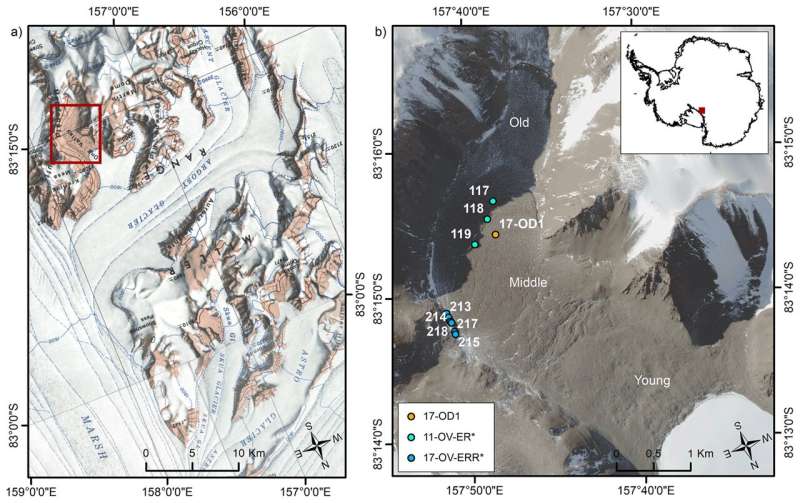August 12, 2022 report
Ice core taken in Antarctica contains sample of atmosphere from five million years ago

A team of researchers affiliated with multiple institutions in the U.S. has successfully pulled an ice core from Antarctica's Ong Valley that contains samples of Earth's atmosphere from up to 5 million years ago. In their paper published in The Cryosphere, the researchers explain why they chose to drill in the Ong Valley and what they hope to learn from their study of the ice core.
Scientists have been drilling and pulling ice cores in Antarctica for many years—the idea is to study the air bubbles that have been trapped in the ice, some of which go back millions of years, to learn more about the Earth's atmosphere back then. Until now, most such core samples have been pulled from sites in eastern parts of Antarctica because the ice there has been deposited slowly in clean layers over millions of years.
In this new effort, the researchers chose to drill instead in the Ong Valley, located in the Transantarctic Mountains, which, as their name suggests, separate eastern and western Antarctica. Ice in the Ong valley was deposited there by glaciers that slid down from the mountains. As the ice on top melted, rocks pulled down from the mountains created a layer of rock that protects the ice beneath it. And prior research has suggested that the ice underneath could be from as far back as 5 million years ago. In addition to being older than the ice in the east, the ice in the Ong Valley is also less thick, which means getting a useful core does not require drilling as deep.
The researchers drilled through the ice over the summers of 2017 and 2018, and were able to access the protected ice beneath the rock and to pull a core sample 9.5 meters long. Initial testing of the isotopes it contained suggest the age of the ice ranges from 3 million to just over 5 million years. Isotopes such as neon, aluminum and beryllium can be used for age testing because they were created by cosmic rays colliding with the rocks above. The researchers also found that the ice sheet below the rocks actually comprises two sheets, one above the other, suggesting two glaciers wound up at that site in the valley, millions of years apart.
More information: Marie Bergelin et al, Cosmogenic nuclide dating of two stacked ice masses: Ong Valley, Antarctica, The Cryosphere (2022). DOI: 10.5194/tc-16-2793-2022
Journal information: The Cryosphere
© 2022 Science X Network




















